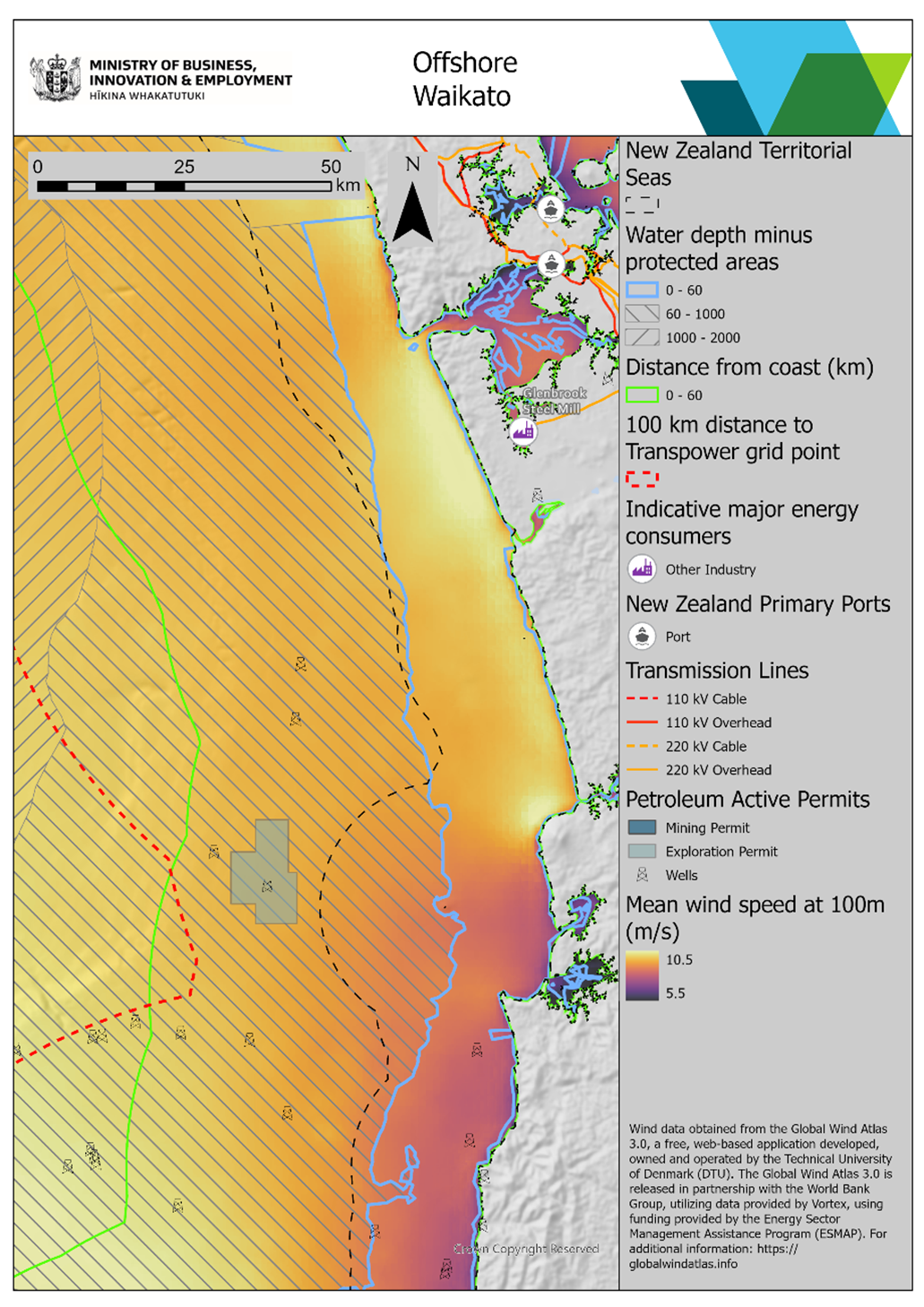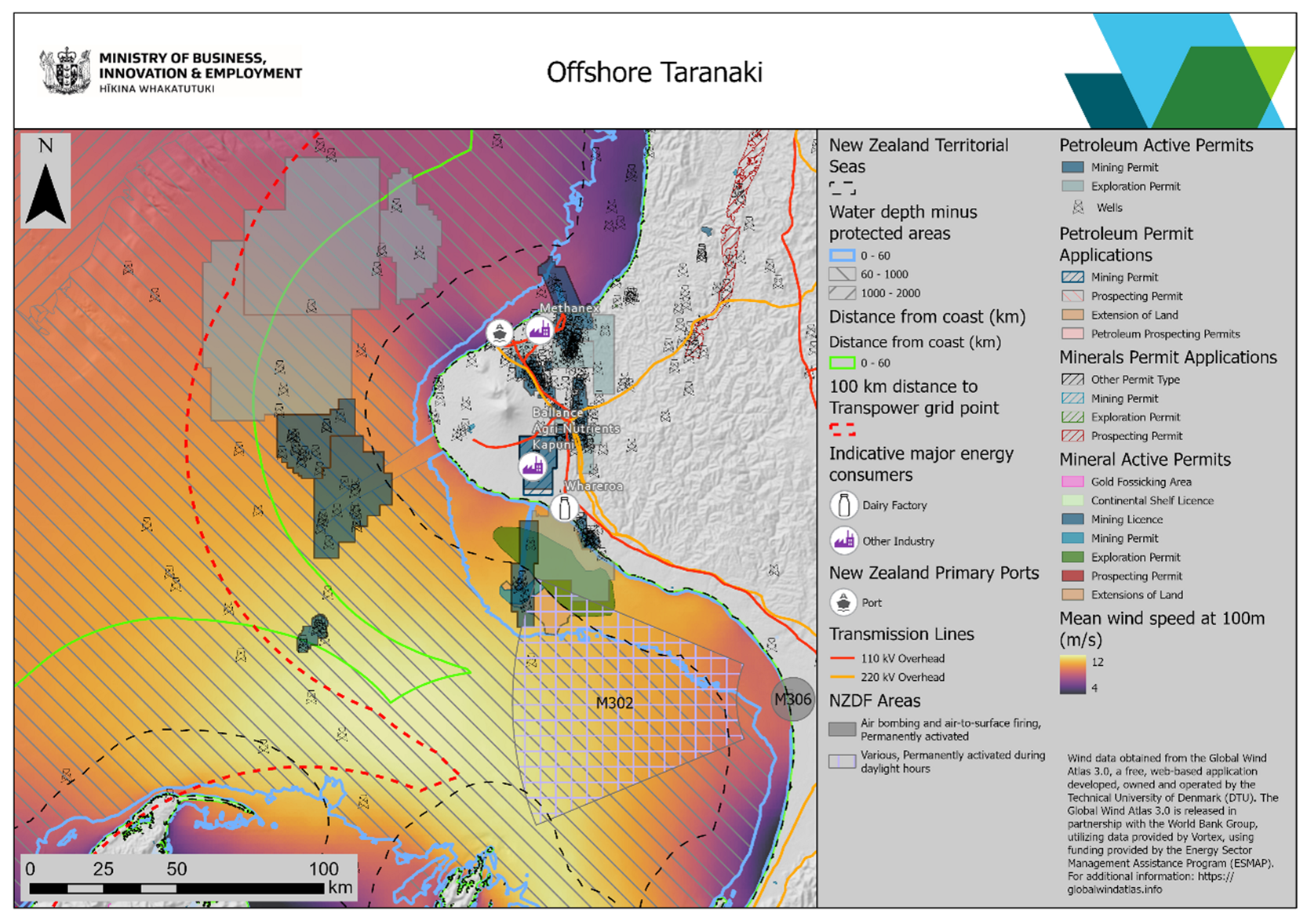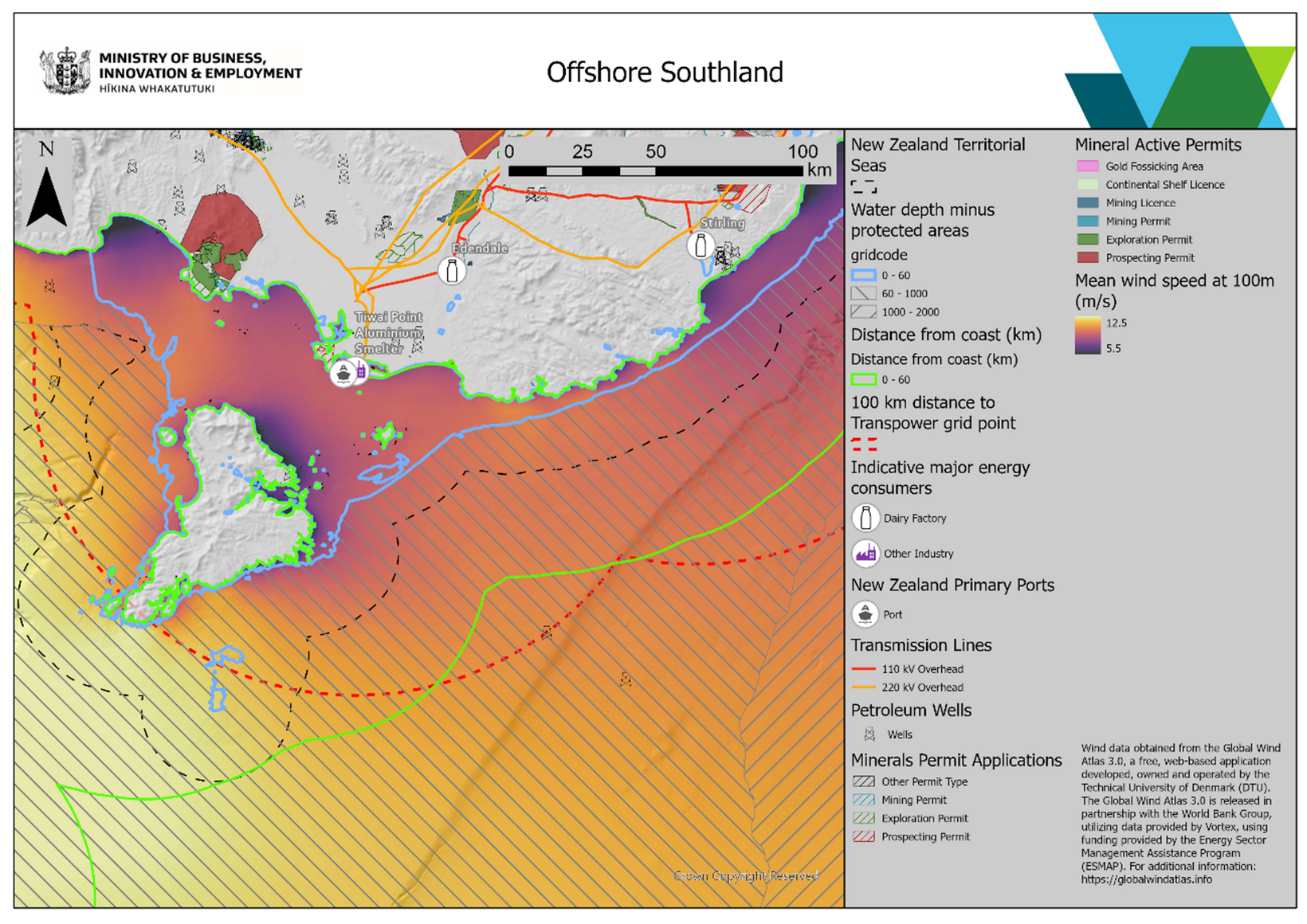Annex 1: Location of interest maps
On this page
Waikato
Figure 1 shows the highest level of potential wind capacity to be near shore, however beyond the 60m depth contour (indicated by the outer limit of the light blue line) there is a relatively broad shelf of less than 200 m water depth and mean wind speed at 100m elevation in the order of 8.2 m/s within 60 km of the shore. The majority of the area is within 100 km of Transpower high voltage infrastructure with nearby significant major energy consumers.

Figure 1. Wind potential and high-level constraints for development in Waikato
Image transcript
Taranaki
Figure 2 shows the highest level of potential wind capacity in the South Taranaki Bight, generally in water depths of less than 100 m. Mean wind speeds at 100m elevation are predominantly in the range of 8 – 11 m/s within 60 km of the shore. The majority of the central and northern area is within 100 km of Transpower high voltage infrastructure with nearby significant major energy consumers. It should be noted that there are relatively high levels of constraints due to existing oil and gas industry infrastructure (petroleum platforms and wells, and 3 pipeline protection corridors) and minerals and petroleum permits, and New Zealand Defence Force areas.

Figure 2: Wind potential and high-level constraints for development in Taranaki
Image transcript
Southland
Figure 3 shows the highest level of potential wind capacity to towards the south and west of the area, however this is constrained by water depth and distance to shore connection. Of the eastern areas within 60 km from shore, water depth is predominately less than 100 m, with mean wind speeds at 100m elevation in the order of 10 m/s. Of the area within 100 m water depth, the majority is within 100 km of Transpower high voltage infrastructure with nearby significant major energy consumers. There are relatively high levels of commercial fishing in and around Foveaux Strait.

Figure 3. Wind potential and high-level constraints for development in Southland
Image transcript

